Welcome to a new issue of the Journal of Runic Studies, the premier Malkioni publication for studies into the nature of Glorantha. If you haven’t subscribed yet, please consult with the spirit bound to the appropriate electronic page.
This is issue 42 of the Journal! We have reached the meaning of life, the universe, and everything! Thank you to everybody who has subscribed to the newsletter, left a comment, sent an email, or even gave it a like or thumbs up on social media.
Note that next week is ChaosiumCon so the newsletter will be delayed by a day or two while I travel back to Western Canada.
God Learner Sorcery
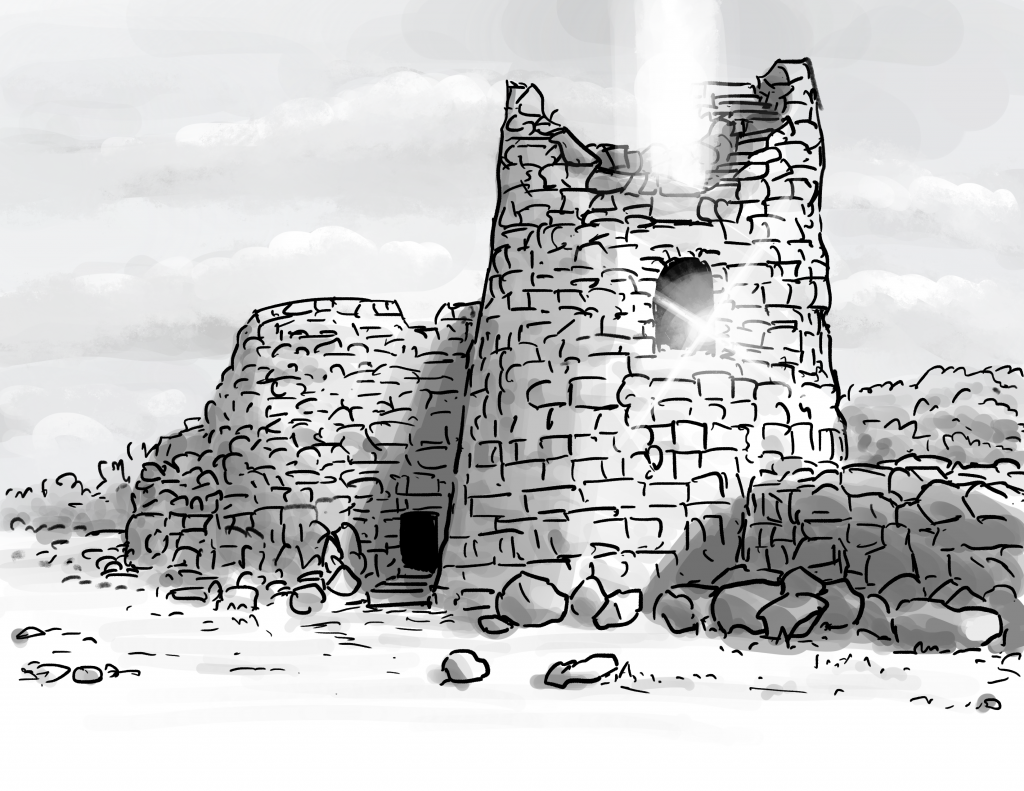
Here is what us God Learners were up to this week.
Episode 10: Out of the Suitcase
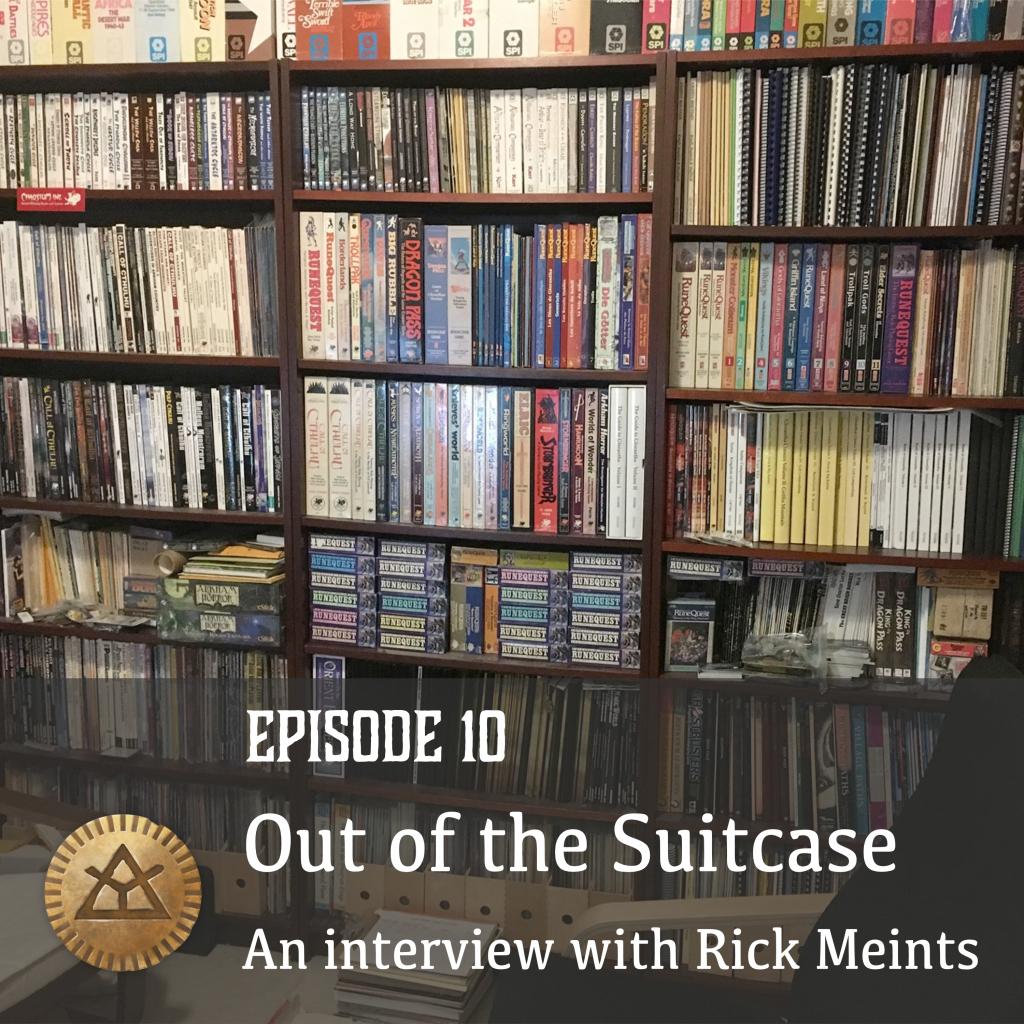
Episode 10 of our podcast is out! Chaosium president Rick Meints chats with us about Pavisite fanzines, ChaosiumCon, RuneQuest streaming, podcasts. his “Index to Glorantha”, foreign licensees, QuestWorlds, LARPing, board games, collector items, and more!
Bog Struggles Sneak Peek
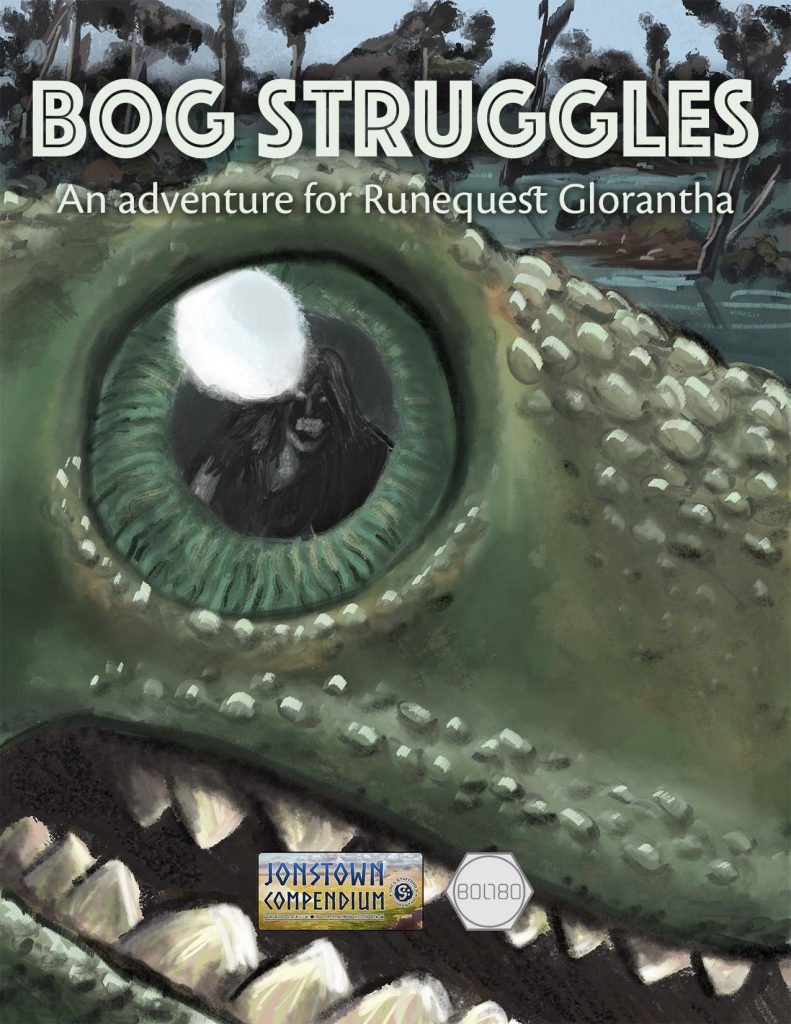
Here’s a preview of the cover for my second RuneQuest adventure! (the first one being, of course, A Short Detour) Bog Struggles is going to be shorter and simpler, as I’m trying to channel the early Beer With Teeth formula of a straightforward encounter that’s very easy to drop in any campaign, is scalable, and has one cool twist. I’m hoping to release by the end of the month!
Chaosium News

Here are this week’s Chaosium news!
RuneQuest is Now Available in PDF
And we’re talking about PDF as in “Papyrus Delivery Format”, of course. You can read the announcement here.

Yep, it’s April again. And I hope you got the Ea-nasir reference.
Balancing Old & New RuneQuest
James Coquillat continues his interviews with Chaosium designers. This one with Jeff Richard is very interesting because it deals with the Gloranthan design process, including how to deal with the 40 years of material, how to revise it, and how to find new things to invent. Jeff talks about the Elmal/Yelmalio problem, heroquesting, and more interesting things!
We Are Featured on Chaosium’s Blog!
The latest “Out of the Suicase” post on Chaosium’s blog mentions Rick’s interview with us this month. Plus: a funny advert for RuneQuest from 1983!
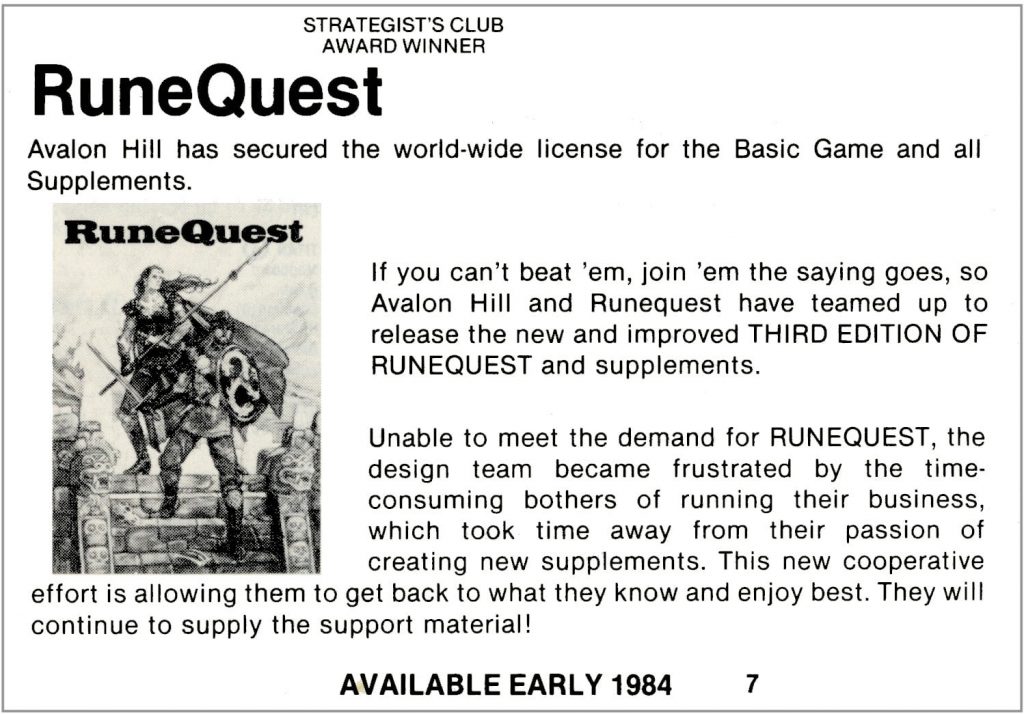
What’s Next for RuneQuest
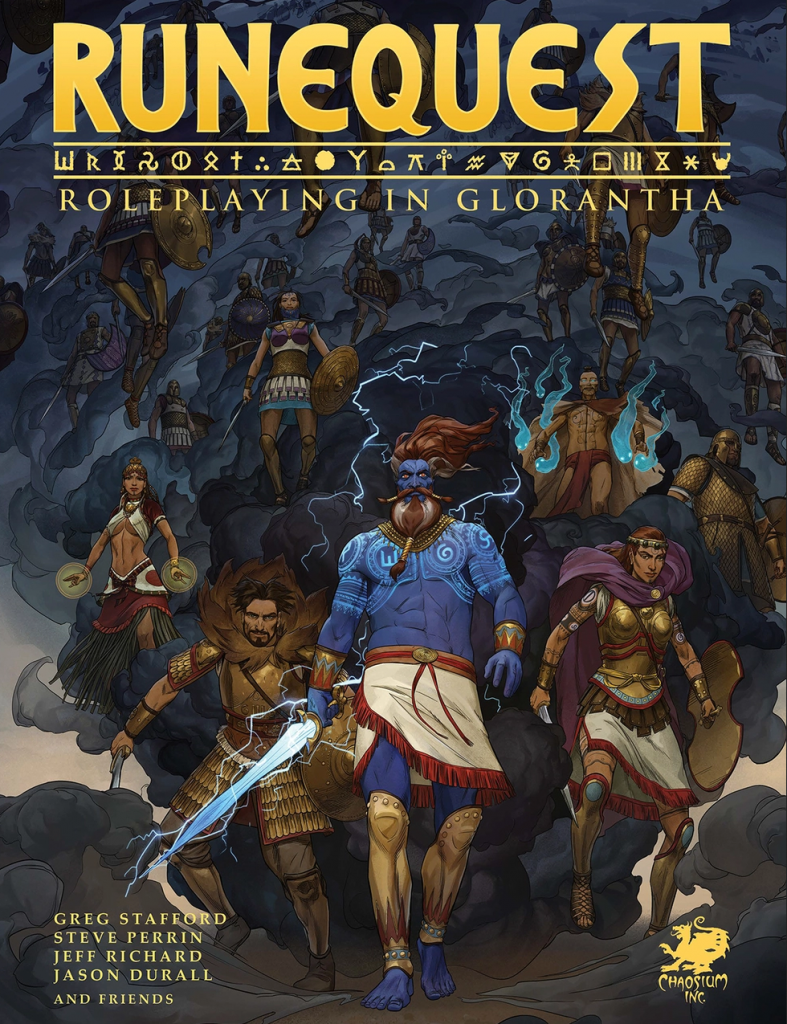
Jason Durall, line editor for RuneQuest at Chaosium, has given some informal update on the current product pipeline:
The Gamemaster Sourcebook is well underway. I work on it almost daily, though managing all of the other projects and keeping them moving eats a bit into that time. I expect it to go into layout sometime this summer.
This Gamemaster Sourcebook is actually referenced directly (as “RuneQuest Gamemaster’s Guide”) in the core rulebook published 4 years ago, but we’ve been waiting for it ever since. Of note, Jason also confirmed that the much awaited heroquesting rules are part of this Gamemaster Sourcebook.
The product pipeline for 2022 looks like this:
Dragon Pass Gazetteer, Cults of Glorantha + Prosopaedia, Gamemaster Sourcebook
It’s interesting to note that the “Dragon Pass Gazetteer” has been branched out of the Sartar Homeland project. This possibly indicates that the latter won’t be a boxed set anymore, but that’s 100% conjecture on my part.
QuestWorlds Rebranding

The HeroQuest Glorantha books are supposed to go through a rebranding to remove mentions of “HeroQuest” and replace them with “QuestWorlds”. The last update we got was from Rick Meints back in January:
The Sartar book, Pavis book, and Sartar Companion book for Questworlds should be available in a few months.
We have some confirmation now that the older HeroWars material is not going to get rebranded.
Jonstown Compendium

The Jonstown Compendium is Chaosium’s community content program for all Gloranthan games, hosted on DriveThruRPG. Disclaimer: all the relevant links are affiliate links that hopefully will let us cover some of the hosting and maintenance costs for the website and podcast! Thanks for using them!
Vilinar Cave Miniatures

Dario Corallo has another pack of paper-miniatures for us. This one is for the “classical nest of broos” from the “Revenge of Muriah” adventure of the Borderlands campaign (also found in Borderlands & Beyond).
Seven Tailed Wolf Preview
Andrew Logan Montgomery has shared some more sneak peeks at the third (and supposedly last) volume of the Haraborn campaign, which started in Six Seasons in Sartar and continued in The Company of the Dragon:
Six years after war drove them from their lands and families, the Company of the Dragon has returned home. But Black Stag Vale is ancient, and the powers that have re-awakened in their long absence are not so easily tamed. As the Lunar Empire threatens from the north, and the Prince they helped put on the throne falls, the Company stands at the crossroads between the lives they lost and the lives they have been forced to lead.
Which way they turn is up to you…
There are more pretty pictures where that came from.
Jeff’s Notes

Jeff Richard, the current mastermind on everything Gloranthan at Chaosium, is often posting notes and thoughts on the RuneQuest Facebook group. Here’s our curated list from the past week. A partial archive of these sources is compiled on the Well of Daliath.
Suppressing the Orlanth Cult
During the Lunar occupation of Sartar and Prax, the Orlanth cult was prosecuted, and worship of the Storm God was forbidden. But how and why did it happen in practice? Jeff spills the beans on BRP Central when it comes to the city of New Pavis:
Sor-eel the Short kept the Orlanth temple open in New Pavis, but installed a priest who was widely considered to be Illuminated. Although the cult was suppressed by the invaders, the political clout of Orlanth’s priests allowed some of them to remain in the city despite the repression.
When Sor-eel was removed in 1621 (some say through the influence of Tatius the Bright), he was replaced by Halcyon var Enkorth, who had served with success as a Lunar legate to the barbarian king of Elkoi (and who had ties to the powerful Assiday family of Raibanth). From 1621 to 1624, Governor Halcyon was more aggressive in his suppression of the Orlanth cult in Pavis, and made active use of Gim Gim the Grim and the Moon Masks to suppress the cult. However, in 1624, Argrath and his nomad army defeated the Lunars and seized the city, at which point Orlanth Rex became the ruling cult (in contrast with Pavis which remained the city god).
The “aggressive” suppression of the cult would include:
1. Closing the temples known to the Lunar authorities that are near New Pavis. That would be the major temple in New Pavis, the minor temple at Garhound, and a few other shrines and minor temples. The minor temple in the Rubble might get raided, but the Rubble is too dangerous to waste soldiers in garrisoning a temple location.
2. Exiling/outlawing known priests and Rune Lords. Just forbid them from entering New Pavis, the Rubble, etc. Identifying them is a job for Gim Gim.
3. Harassing prominent initiates. That’s a job for Gim Gim and the Moon Masks.
4. Watching associated cults like Ernalda, Issaries, Lhankor Mhy, and Chalana Arroy for covert associated worship.
You might wonder whether there was a lot of heroquesting going on to try and change these things one way or another. This is especially worth thinking about given how the Lunars managed to “kill” Orlanth: the Windstop lasted from 1621 to 1622 and during that time all Air magic failed around Dragon Pass and Prax. Ernalda was dead too, with Earth magic also largely failing, but this is often considered an unwanted and unforeseen side-effect. It’s possible that the Lunars underestimated how much Ernalda would “stay close” to her husband. Anyway:
There is often an assumption because a group has heroquesters or is at least known to have had heroquesters, they will use heroquesting to solve all sorts of “problems” like the Thunder God being associated closely with the Earth Goddess.
Of course this is rarely the case, even in groups with many active heroquesters, such as the Lunar Empire or Argrath’s Sartar. First of all, most of these problems are largely academic or abstract compared to the actual threats that face the group. Hon-eel’s biggest quests were: 1. getting a new very productive crop to help feed the post-Sheng Seleris Heartlands, and 2. proving that the she (and by extension the Red Goddess) is the lover of Yelm and thus closer to the Sun God than the Pure Horse People. Her third big quest – to prove that she is associated with Ernalda in order to gain the support of the Provincial Orlanthi ultimately failed (but conventional Lunar military assets proved enough to cement her dynasty in Tarsh, although not without many reversals and set-backs).
And those threats were all immediate and tangible problems, and her quests were not about “re-writing the past” but about finding out something new that does not invalidate what was known before, but does result in a reinterpretation based on the new discoveries. Yes the Pure Horse People and their Queen were close to Yelm, but Hon-eel is even closer – she is Dendara to Yelm. Sure the Horse Queen continues to speak for Yelm, but needs to be wary around the Lunars because they too can speak for Yelm.
I find this reference to “re-writing the past” interesting, since I’m still unsure exactly what is possible or not with a heroquest. Heroquesting isn’t time-travel so you can’t change something that happened in Time. But I think you can change something that happened in the God Time? At least to the extent that you can make a new story that tells something different (or differently), and somehow convince everybody (including the Cosmos, maybe) that this new story is more important… or something along those lines?
Nochet Notes
Yep, pretty much what it says in the title:
Nochet is five times the population of Furthest and ten times that of Boldhome. At 600 hectares, it covers almost twice the area of Rome within the Servian Walls. With an average density of about 165 people per hectare (remember, the city has areas much less densely populated and areas much more densely populated), it is comparable to ancient Alexandria. Another roughly comparable size and population would be that of medieval Venice.
The Servian Wall is shown in blue in the map below. It encompasses the seven hills of Rome and was built in the early 4th century BCE. It was expanded around a century later with the Aurelian wall, shown in red in the same map:
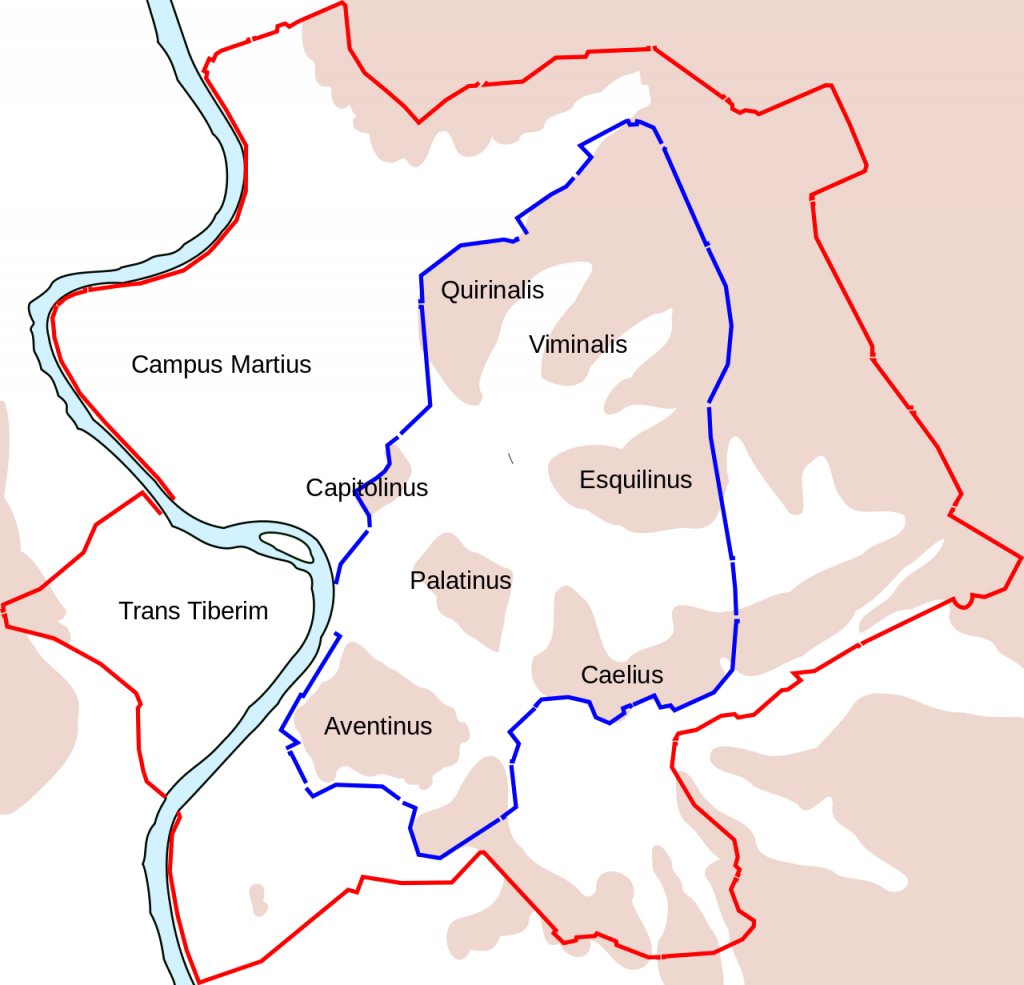
Within its walls are:
15k Ernalda initiates
10k Orlanth initiates
5.5k Issaries initiates (more than all of Sartar)
4.3k Chalana Arroy initiates (more than all of Sartar)
4.3k Lhankor Mhy initiates (more than all of Sartar)
3.8k Dormal initiates
3k Argan Argar initiates
2k initiates of Asrelia
2k initiates of Gusbran
2k initiates of Lanbril
2k initiates of Lodril
1.6k initiates of the Seven Mothers
1.5k initiates of Maran Gor
1.3k initiates of Esrola
1.3k initiates of Babeester Gor
1.3k initiates of Humakt
And another 10-15k initiates of other cults.In short an incredibly diverse city, although recognizably Theyalan. Almost all oceanic trade to Dragon Pass and Peloria pass through either Nochet or Karse. In Nochet we can get silk from Kralorela or Teshnos, spices from the East Isles, Fonrit, or Maslo, crafted goods from Seshnela or Loskalm, and more.
Note that most of the three thousand Argan Argar initiates are humans. These are all the people who facilitate life with the neighbouring troll lands.
There are not too many Esrola worshippers compared to the Ernalda cult because these represent people who directly worship Esrola. All Earth cultists would still worship her as an associated goddess:
[…] Esrola is the Grain Goddess. She has relatively few people who worship her independently of the Ernalda cult.
It’s interesting that, with 10-15k initiates of “other cults”, there’s still a LOT of room! For instance, water deities have a pretty good presence in Nochet, what with the Mirrorsea Bay (aka Choralintor Bay) and the access to the ocean:
Choralinthor has a lot of initiates – enough to support a major temple. But that is just a drop in the bucket with a city the size of Nochet.
In fact, you can add at least another 20 Major Temples for any non-listed-above cult in Nochet with these 10-15k. Or 40 to almost a hundred different Minor Temples! Go crazy, world-builders!
This makes me think that a trip to Nochet might actually be fairly common for minor cult worshippers in search of a sizable temple? It might be far from wherever you are, but you benefit from Royal Roads, the many possible caravans and travel companions, and many other opportunities once there.
Jeff warns Gloranthan scholars against relying too much on Stafford Library books like Esrolia: Land of 10,000 Goddesses for their campaigns, because these books are often about how stuff was a long long time ago:
This is a problem with using the 10k Goddess material. It is set up from the perspective of the First Age and has very little material about Nochet in the Third Age (about one page).
Anyway, Jeff continues about Nochet:
Many Sartarites have a strong connection to Nochet, as the kingdom is linked to the city by trade, culture, and religion. Many members of the royal dynasty lived there for some time – and many others lived and died there.
In contemporary Sartar, Erenava Chan lived there for many years. Gorangian the Chief Librarian of Jonstown is from Nochet (as is Sorala). Vasana and Yanioth both fought for Nochet against the Lunar Empire. Argrath himself was there for several seasons and is rumoured to have had a dalliance (or even been a Year Husband) of the young queen.
We can think of Nochet as the de facto center of the cults of Ernalda (Ezel is more sacred, but Nochet is still where everyone goes), Babeestor Gor (Axe Hall is more sacred, but Nochet is where the cult has its biggest presence and nearly one in twenty initiates reside there), Chalana Arroy, Dormal, Issaries, and Lhankor Mhy.

Ezel (west/north-west from Nochet) has a Great Temple complex to Ernalda, and is considered the “home” of the goddess. This is where those “10,000 goddesses” are actively worshipped.
Axe Hall is, surprisingly enough, at the top of the Shadow Plateau. I’m not sure why is but apparently we’re not supposed to argue with Babs… indeed, the short write-up from the Guide to Glorantha makes me chuckle: “Axe Hall (sacred place): Babeester Gor chose this place as her own. No one argued. No one else goes near it.“
The Shadow Plateau
Jeff is definitely spending some time in the Holy Country these days:
The Shadow Plateau is one of the great centers of trolldom in Glorantha, allthough it is now but a shadow of the former Kingdom of Night.
Hee hee hee…. it’s a shadow of the former Ki… what? Come on, let me have this one, okay?
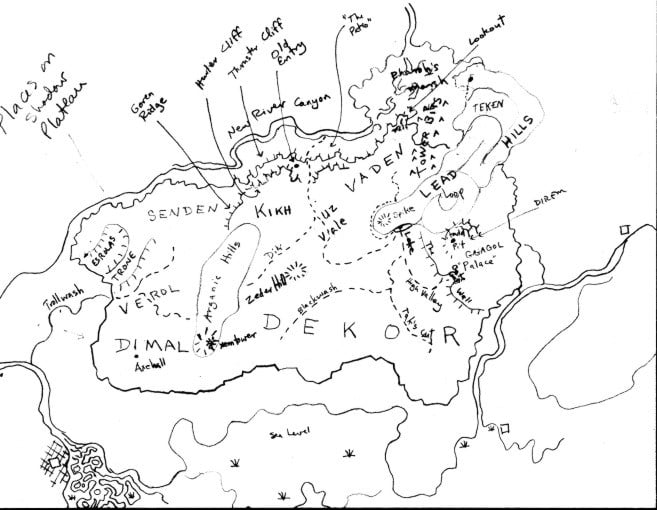
There are some 41,000 trolls on the plateau. Of those over 8000 are adult dark trolls, 1600 are great trolls, 1200 are cave trolls, and over 26000 are trollkin. The rest are immature dark trolls.
That’s a lot of trollkin to bring down the defenses of your Sword-Trance’d Humakti!
These number don’t include the very small minorities:
[Mistress Race trolls] are always so few that they don’t end up in those counts. Any more than I am going to list the number of nymphs or dryads.
Trollpak’s random percentages had no more than 1% of troll society are mistress race trolls. I suspect the numbers are much lower. But in any case the range is probably somewhere between 40 and 200. And likely closer to 40 than 200.
Remember that there aren’t supposed to be many of these super ancient scary troll ladies. They’re supposed to be memorable encounters. I picture them a bit like Methuselahs in Vampire: The Masquerade.
Anyway, back to the Shadow Plateau:
Kyger Litor is the most important cult among the trolls (of course), followed by Argan Argar. Zorak Zoran is surprisingly popular with 1400 cultists, and Xiola Umbar has some 750. Most interesting are the 400 trolls who belong to the Orlanth cult!
Orlanthi trolls? Hey, that reminds me of some drawing I saw recently…
Because of the influence of the Argan Argar cult, the trolls are perfectly willing to work with humans on the right terms. The presence of ZZ insures that the humans respect and fear the trolls and let them drive hard bargains!
Sightseeing wise, the Shadow Plateau is probably impressive:
The presence of the Shadow Plateau in the Holy Country is an interesting one. Darkness is right there, looming over the land of Earth, Air, and Water. Covered in shards of black glass and pulverised obsidian.
Jeff recommends the Obsidian Flow at the Newberry caldera (in Oregon, USA) for reference. Here are some pictures:



OLYMPUS DIGITAL CAMERA
Oh and yes, I just learned today what a “caldera” is.
Krarsht Design Notes
In a thread on BRP Central, Jeff mentioned some changes to the Krarsht cult.
As written in the old Cults of Terror, this Chaotic cult was deliberately designed as a sort of “anti-Storm Bull” cult. Its Holy Days aligned with those of Storm Bull, it had a special skill called “Sense Order” (mirroring Storm Bull’s “Sense Chaos”), and its Rune Magic included spells like “Defend Against Law” and “Face Law” (mirroring Storm Bull’s “Defend Against Chaos” and “Face Chaos”).
Some of this has been revised in the upcoming Cults books. The two anti-Law spells were gone from early drafts, and the Sense Order skill has been removed from later drafts.
The holy day stuff “made it through” because I felt no need to change that (especially because of the [myths]). The “anti-Storm Bull” nonsense comes from one of the two main myths we have of Krarsht (the other is Larnst and the Footprint)
[…]
The cult hates Storm Bull because of the damage he did to the Devouring Mother during the Gods War, especially since she has never fully recovered from her grievous wounds. [… Krarsht is] not a reverse-Storm Bull – she’s someone who hates Storm Bull because that god nearly destroyed her.
Ty Kora Tek
Jeff posted a note about everybody’s favourite zombie granma:
Ty Kora Tek is propitiated each Wildday by Earth cults. Wildday of Death Week is her seasonal holy day. The entire Death Week of Darkness Season is dedicated to her; her High Holy Day is Wildday of that week. On that day, the dead visit the living and must be fed and offered gifts.
Of course, Jeff illustrates this with the Mexican Day of the Dead:
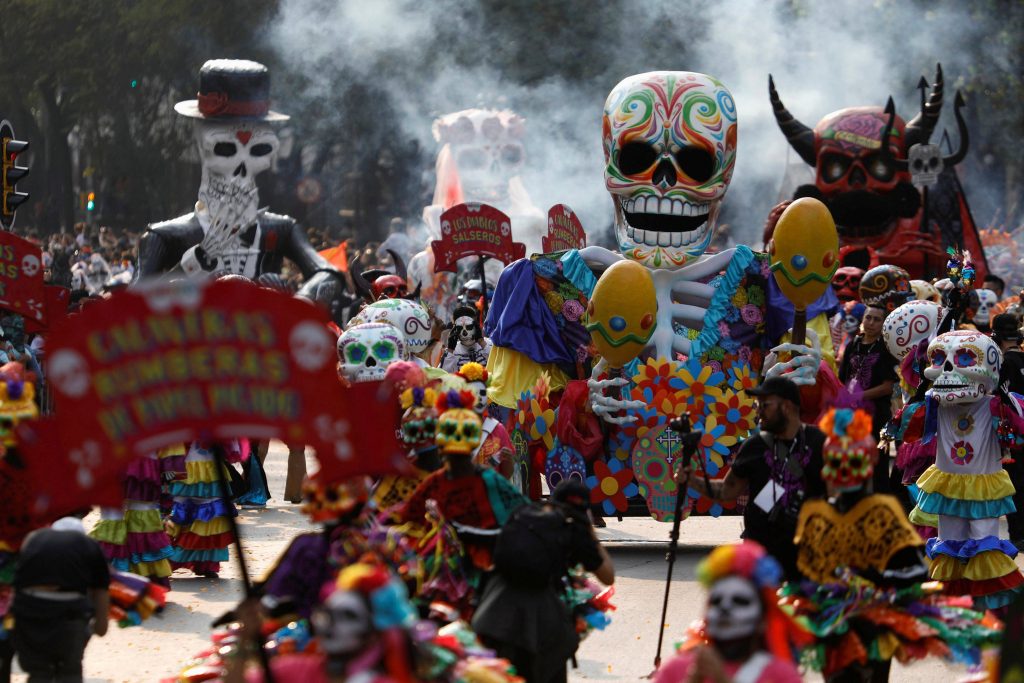
Now that last sentence is pretty darned filled with possibilities. Obvious that means a festival analogous to the Día de los Muertos is going to be found in many Theyalan lands – particularly in the Holy Country, Sartar, and Maniria. But it also means that each year, the dead leave The Necropolis and travel to Nochet along the Sacred Road. And the living costume themselves up as the Dead, offer them food, songs, and gift, and celebrate their anscestors.
And so not only in Nochet and Esrolia, but no doubt in Boldhome and other Sartarite communities, we get Ty Kora Tek’s Day of the Dead celebrations!
I’d really like to play an adventure or two during the Necropolis procession. It can even be a reason to travel to Esrolia. Paying respects or asking for advice from an ancestor could be a roleplaying opportunity, but finding some particular dead person for information on a McGuffin could be a decent narrative hook. Plus, it could be used as a great, dynamic backdrop to some action scene (the way action movies like James Bond would use the Mexican celebration), and if you stretch it out for a bit, there’s a whole bunch of fun little side-adventures you can run with various ghost-related shenanigans. Yes, I’m very excited about the Necropolis procession.
Heresy in Glorantha
Jeff answered a question about heresy in the Lunar Provinces, and this post appeared. I”ve split it up in two parts (one about the Seven Mothers cult, and one about the Orlanth cult), and added some later comments below in this preface, because I think it makes more sense this way.
First, Jeff wants to make sure everybody understands the difference between heresy, apostasy, and blasphemy:
- Heresy is adherence to a religious opinion contrary to the cult’s dogma.
- Apostasy is the act of refusing to continue to follow, obey, or recognize a cult’s beliefs.
- Blasphemy is insulting or showing contempt for a deity.
So I’d say that heresy is about wrong thinking, apostasy is about slamming the door and leaving, and blasphemy is about drawing penises on the temple’s walls. Well, assuming it’s not a temple to Eurmal or Lodril or something (in which case it’s totally appropriate and please carry on).
Most Gloranthan cults are transactional – Orlanth agrees to give you some fraction of his powers on the following terms. If you violate those terms, that’s not heresy – that’s contract violation or apostasy.
I introduced the term “heresy” in quotation marks for a reason. But let’s remember what it is – a heresy is a belief that violates important religious teachings but is not apostasy. With many Gloranthan religions, if you are able to contact the god, wield its magic, and do not trigger spirits of retribution or other forms of divine anger, then it is pretty hard to argue that what you are doing is wrong in the eyes of the god.
And the follow up question is if it is ok with the god, who are you to argue?
Of course, in order to know whether spirits of retribution or divine wrath are falling upon a cultist, there must be a gamemaster making that decision! So we still need a good way to figure out if something is indeed “right” or “wrong”.
Heresy and the Seven Mothers
Let’s start here – when thinking about heresy in RQ, it is always worth looking at a cult’s organization as there must be people who declare something to be heresy. Here’s the organization of the Seven Mothers cult:
The supreme priest of the Seven Mothers is the Red Emperor. The Red Dancer of Power guides the overall activities of the cult. Within the Lunar Heartlands the cult is overseen by the local satrap, and in the Provinces, it is overseen by the General Guide for the Lunar Way.
From who the leaders of the cult are (and what their basis of authority is), we can quickly figure out a few things that they might consider heretical:
Challenging the authority or legitimacy of the Red Emperor
Challenging the authority or legitimacy of the Lunar Empire as a temporal political institution
Challenging the authority or legitimacy of a given satrap
Challenging Lunar policy in the Provinces.
I assume that this is all heresy because the Lunar cults’ dogma includes the Red Emperor being the son of the Red Goddess, incarnated on the surface to rule her empire and all that jazz. You can challenge the Lunar policy in the Provinces as an outsider (that’s called “rebelling against the Lunar Empire”), but you’re risking heresy saying the Red Emperor is wrong.
In short, the White Moon movement is pretty much the textbook definition of a Seven Mothers heresy. The problem there is that a 7 Mothers cultist can subscribe to the White Moon movement and unless that individual is Banned by a priestess, they retain full access to cult magic, spirits, etc. This gets even more thorny if the person is a Red Goddess initiate (and thus Illuminated). The Seven Mothers have no spirits of retribution, so the decision to call the White Moon movement “heretical” is fundamentally political, not easily enforceable without resort to coercive violence, and possibly poses the problem of being blown off by powerful Lunars.
The White Moon movement is another one of those things I’ve heard about but am just now looking into. It sounds like they believe that the Red Goddess never intended to have a lasting Lunar Empire on the surface — instead, she allegedly just wanted her “way” to spread through Glorantha’s cultures, and that doesn’t require a whole imperial war machine. It did require force at the beginning, but the White Moon people think it’s time to let the empire wither away, and to let the Red Moon become White, a moon of peace and calm. I guess the White Moon cult wants to spread as a philosophy rather than as a nation.
And thus we can see the problems the White Moon movement poses for the Lunar political authorities. Much better to get White Moon followers to agree that they were wrong through debate and discussion.
Some other “heresies” in the past – the most significant was “misidentifying the Red Goddess”. So saying that the Red Goddess is actually a manifestation of Entekos or Dendara – that’s a no no. The Red Goddess herself slapped down Valare Addi for that one. And she had good reason for that – the Red Goddess was an active heroquester and misidentifying her could pose serious dangers to her!
Valare Addi is only briefly mentioned in published material, as an early Lunar hero of the first wane. This was back when the Red Goddess was a mortal on the rise. Valare must have had her own opinions about the whole thing since she had her own cult going, but it seems like her and the Red Goddess reconciliated: Valare later went on to live on the Red Moon. The Valar-telsor is one of the main Lunar noble families, and claims descent from Valare.
Ok, I lied. There is a whole bunch of information on Valare Addi in the Entekiosad — in fact, the Entekiosad is supposedly co-written by Valare Addi herself. But I have not read the Entekiosad and you probably shouldn’t unless you really want to.
I do find it very interesting that once you start having a Hero Soul (i.e. a presence on the mythical plane), you have to keep an eye on other people, and on how they use or relate to you. I don’t imagine it would be important for adventurers unless you play at really high power levels, but it might be an interesting scenario idea to have, say, Argrath asking the adventurers to participate in some heroquests that aims to mess with Jar-eel’s identification!
Speaking of Jar-eel:
This was important enough that Jar-eel the Razoress needed to spend seasons debating with prominent White Moon leaders to get them to agree that they were wrong. And even then – with all the power and charisma that Jar-eel could bring to bear – it was only partially successful. The Red Emperor ultimately resorted to violence to suppress the White Moon movement. The resulting rebellion crippled the Lunar Empire during the crisis of 1625.
I’d say that the White Moon rebellion is probably viewed as a far greater threat by the Red Emperor than anything going on in Dragon Pass. Probably a greater threat than even the Voor-ash (which are viewed as far more threatening than anything in Dragon Pass).
The Voor-ash seem to be, basically, the return of the Pentians in the Lunars’ nightmares. You might remember that Sheng Seleris and his horse-riding nomads were a giant threat to the Lunar Empire during its 3rd and 4th wanes, almost destroying it. No doubt the Lunars were traumatised, so they must be getting extremely nervous with Dranz Goloi, the Khan of hte Voor-ash tribe, who is unifying the new Pent tribes and getting all setup to channel Sheng Seleris’ legacy once again.
Heresy in the Orlanth Cult
Jeff continues by looking at the Orlanth cult for comparison:
Individual temples are pretty much completely autonomous unless that have acknowledged a Rex – a tribal king or prince or similar “wide-ruler”. That Rex has the ability to bend the temples to his will, but needs to work to do it!
Without the Rex, Orlanthi temples have historically done such radical things as agree that a mortal hero can become the new Orlanth or decide that we should learn the secrets of the dragons and give worship and sacrifice to them. The Rex is able to keep constituent temples from doing that – assuming that the Rex disagrees!
So for the Orlanthi, “heresy” doesn’t really have any meaning. “Blasphemy” does – violating a religious rule or treating a god or sacred site with disrespect – but that’s the sort of thing that triggers the Spirits of Retribution.
In short, if a temple can access the god, gain Rune magic from it, and there are no spirits of retribution being sent, then it is ok. Individual temple leaders may impose restrictions, but that is going to differ wildly.
Instead what you usually see is that if a temple is able to get a more effective relationship with the god – more or stronger magic, more success in rituals, more or stronger spirits, whatever – then other temples are likely going to adopt that approach. Because ultimately it works and we can see and feel the results!
One of Orlanth’s Runes is Movement, and to me that means a willingness to try things and change, so this all makes perfect sense to me.
So when the Feathered Horse Queen revealed that La-Ungariant was a title for the great goddess Ernalda – which also gave her the ability to confront the Yelm priests – she was able to magically defeat her foes, gain the support of the farmers, gain the support of the powerful Shaker Priestess, and get the support of the local Orlanth priests. The La-Ungariant priestesses embraced this because 1. she was the high priestess, and 2. it worked!
We can see a similar thing going on when Monrogh revealed the Elmal was but a name for Yelmalio. individual temples rapidly embraced Yelmalio because 1. it worked, 2. Monrogh could get the god’s confirmation and repeat it, 3. it was also in everyone’s interest (and had the support of other powerful groups in Sartar).
But if a temple tries to go too far, it won’t have access to the god. Or might not have the full range of useful magic and spirits. And so it fails.
So rather than thinking about this in terms of “heresy” it just ends up being a question of effectiveness.
Now what you might often see is a temple saying, “we worship god this way HERE” without saying that worshiping that god in a different way somewhere else is wrong. That’s pretty common in polytheism.
I think that’s what happens with the Elmal conservatives around Runegate for instance. Generally speaking, this gives the gamemaster license to add a little local flavour to their campaign.
And of course we know that with the Orlanth cult. Specific temples might be dedicated to Orlanth Thunderous, but of course the members of that temple don’t think the tribal Orlanth Rex temple or the local Orlanth Adventurous temple are heresies.
The Red Emperor’s Rule
Since we were talking about challenging the Red Emperor’s legitimacy, here’s how the Red Emperor claims universal rule. It’s based on:
1. Being given charge of his Divine Mother’s affairs in the Temporal World,
2. Being Yelm’s deputy in the Mundane World, and
3. Being a god in his own right.The Red Emperor is charged with providing peace and order to the whole world. Now that doesn’t mean he needs to govern the world – he’s perfectly willing to acknowledge clients and allies, and let them govern themselves. But they need to acknowledge his supreme status. Independent states outside of this system are fundamentally illegitimate- they are rebels against the divine order. Sartar, the Holy Country, the Voor-ash, Praxian tribes, Loskalm, they are all the same.
One question is the status of the Elder Races. Some Lunar philosophers claim they are doomed, but the Red Emperor generally has a live and let live attitude towards the trolls of the Blue Moon Plateau (even granting them the status of Ally) and the Yolp Mountain Trolls. Same with the dwarves of Jord and the Brass Mountains. And the Red Emperor often speaks of friendship towards the elves (which is usually ignored by them);
Another question is Ralzakark, whom the Red Emperor treats as a peer. Some anti-Lunars claim that may be tie of kinship….
Importantly the Lunar Empire has no “fixed” borders or boundaries other than the Glowline itself.
Dranz Goloi and the Voor-Ash
A couple days ago I would have said “Dranz Who and the What Now?” but in light of the Voor-ash mention above (in the heresy segment) I actually now know what Jeff is talking about.
I’m not going to quote him in full, since he’s pretty much rehashing what’s in the Glorantha Sourcebook: that Dranz Goloi is coming through the Redlands (the area between the Lunar Empire and Pent), raiding the eastern Lunar Provinces, with a couple easily repelled attempts at first in the early 1620s, but then with increasing force in the following years. Of note:
[In 1625], Oraya fell, as did most of First Blessed and the Red Emperor was forced to personally thwart an attempt by Sheng Seleris to slip out of the Underworld. Pentan bands raided the outskirts of Raibanth, and deep into Imther and Holay.
Sheng Seleris is trying to get out of Lunar Hell, people. This is, like, bad-ass villain stuff. It’s ridiculous but the first thing that comes to my mind is Tai Lung’s prison in the first Kung Fu Panda movie.
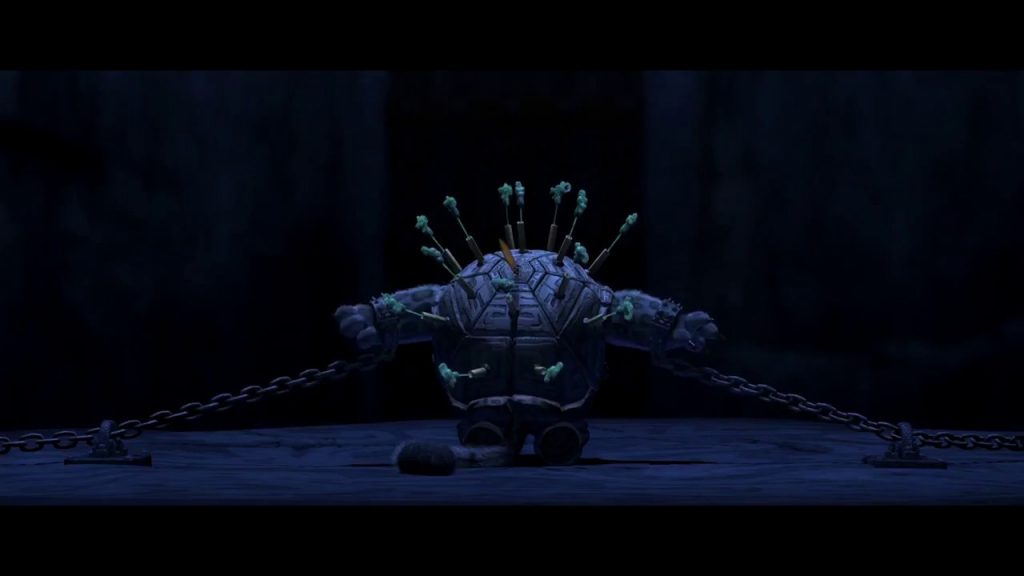
It only takes a goose feather for him to escape! What will it take for Sheng Seleris?
Then in 7/54 (1625), the True Dragon rose in Dragon Pass, and the Lunar Army of the south was lost. Soon after, the Lunar army was routed by Dranz Goloi at the Battle of Diavizzi Ford in First Blessed. The Red Emperor ordered the remaining garrisons of the Lunar Provinces to be stripped and sent them to First Blessed to fight. The Red Emperor appointed his demigoddess Jar-eel the Artess to command the remaining imperial armies.
People like to think of the big conflict of the Hero Wars as being the one between Sartar and the Lunar Empire, possibly because a lot of Gloranthan publications have been Sartarite-focused, but really, as Jeff mentioned previously, the Lunar Empire is a lot more concerned about this Dranz Goloi guy.
So if you ever wondered why the Lunar Empire seem unfocused on what is going on in Dragon Pass, well they kind of have bigger and more immediate problems right now.
Jeff offers this picture of a Scythian noble as inspiration for him:
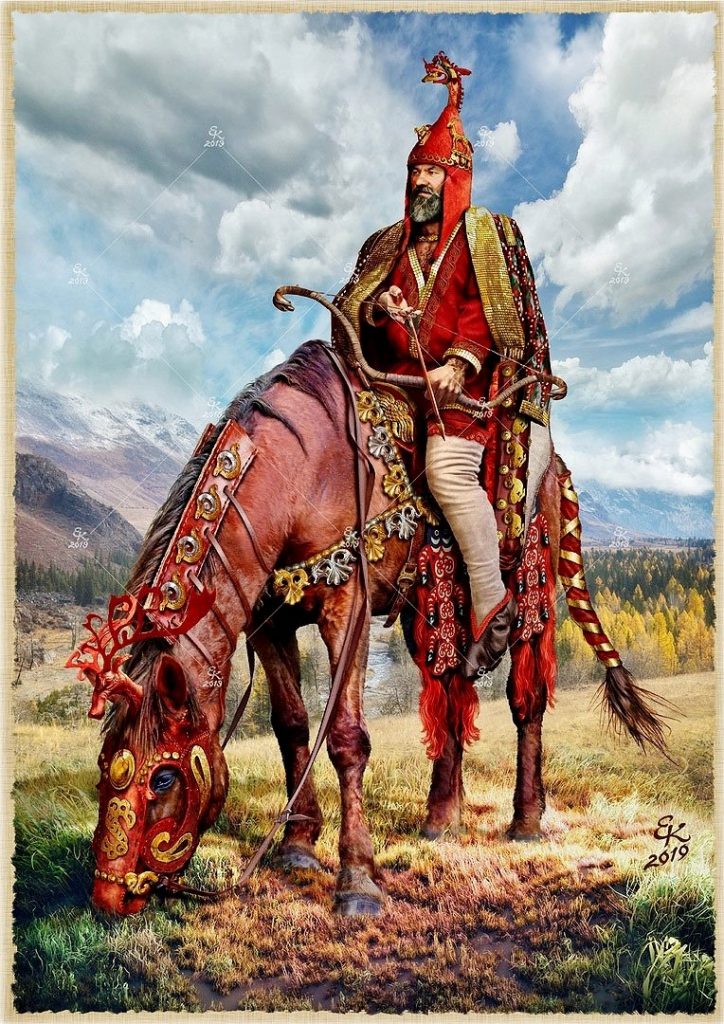
Look up Evgeny Kray’s art for more Scythian goodness. I think that this is his official page on the Russian social media site VK but I’m not sure… it’s Russian… click at your own risk. This Twitter thread of Evgeny’s art is probably easier and safer.
The Prince of Sartar as a Patron
Jeff is travelling to ChaosiumCon at the moment and seems to have way too much time to post!
[…] we often overlook the role of the Prince of Sartar as a patron of letters and art. But of course that has always been one of the key roles of the Prince. Sartar’s friend Wilms was an artist and architect of genius, and Sartar was famed as a patron of the Lhankor Mhy cult, founding and endowing libraries in all of his cities. All of the Princes were known to be literate, and several even wrote works.
The fact that Sartar became criss-crossed with trade routes when the Inhuman Occupation ended and Dragon Pass was open to humans again probably played a part in this too. If all those caravans were only crossing hillbilly country, they wouldn’t want to trade with the locals, let alone stop and spend their money. Taxing the roads is fine, but having all these people talk about how fine your culture is wherever they go is even better, and brings even more business.
The Prince is not only a patron of arts and letters, but a judge of quality and merit, and his approval contributes to the acceptance of new ideas and art forms. Sartar, Saronil, Tarkalor, and Terasarin were all good examples of this – perhaps Temertain’s desire to be recognized as a Philosopher King was not as outlandish as we often imagine.
This is not just a Sartarite thing – Belintar, Moirades, and Fazzur Wideread were all famed for their patronage of arts and letters, and the Red Emperor often claims to be a scholar of unparalleled breadth. But we often forget how much the Sartar Dynasty were active and enthusiastic patrons of the arts and letters.
So remember that Kallyr and Argrath both are likely to be receptive towards scholars and artists seeking patronage. That’s part of their role and responsibility.
Fear not, players of scholars and artists! You can take part in the Hero Wars! Besides, you know what they say about history: it’s written by the victor’s scribes. If you’re one, you better make sure you’re already in their entourage…
But like in other displays of gift exchange, this is a way to tie scholars and artists to the dynasty. Give that Lhankor Mhy scholar support and a stipend, and watch them come up with ways to help and promote the Prince!
Modern Lunar apologists sometimes try to justify their conquests as if they were 19th century European imperialists – civilization over illiterate tribes. But that’s not really the case.
As far as I can tell, this misconception about Lunars “bringing civilization” to Sartarites is partly coming from using the wrong sources (like King of Dragon Pass’ pre-Sartar setting) and self-reinforcing fan-talk (referencing Life of Brian is too attractive to pass on even if Sartar already had roads and sewers before the Lunars). But it might also come from the more Celtic/Viking vibe of the HeroQuest material, where a good chunk of the art depicts wooden longhouses and palissades — a far cry from the colourful and sophisticated Greek/Mediterranean feel of RuneQuest Glorantha. A decent art budget can totally change (or ruin?) people’s mental picture of the setting, so I’m happy that I started with Glorantha being depicted in glorious full-colour detail.
Friendship and Gift-giving
Jeff writes about Orlanthi friendship:
Despite (or perhaps because of) the importance of kinship ties, friendship is greatly valued in Orlanthi culture, and many stories place greater importance on friendship than kinship. One has no choice in kinship, but friends are chosen – to be rich in friends (as Sartar was) matters more than the strength of one’s kin. “Friendship” for the Orlanthi is not casual acquaintanceship. It is a personal, reciprocal bond of loyalty between two or more individuals of roughly equal status who share roughly the same interest or goals. Friends are committed to each other by mutual obligations, and can rely on each other help. One’s loyalty to one’s friends is a key part of the Orlanthi concept of honor – violation of friendship is considered highly dishonorable, even impious!
This is why it’s possibly a good idea to have a “Friendship (Other Adventurers)” Passion for the player characters in your game after a while. You can mix it up a bit, too, with some adventurers having a Loyalty Passion to another adventurer, such as one adventurer being a personal bodyguard or scribe to another player’s Thane of Apple Lane character. This not only adds to the roleplaying bits, it also greatly helps the gamemaster justify why the same group of people keeps on going on adventures every season… otherwise “an Orlanthi warrior, a Yelmalion hoplite, a Yinkini hunter, and a Lhankor Mhy scribe enter an inn” sounds like the beginning of a bad joke.
Honor dictates that an Orlanthi remain loyal to their friends, even against their own kin. Obviously, this can be the source of tragedy – but it is also a great source of strength.
We put a lot of emphasis on kinship ties with the Orlanthi – as we should – but it is also important to note that many of the greatest Orlanthi were mightier in friends than kin, starting with Orlanth himself.
But Orlanthi friendship – like so many Orlanthi customs – is a two-edged sword. One must remain loyal to friends, even when they are wrong. So pick your friends carefully!
Rolling two Passions against each other is a good way for players to figure out what their character should do. Of course, don’t let Passion mechanics get in the way: if you know what you want your character to do, do that, and adjust the Passions as needed! Passions never force players to do anything, unlike what some people seem to think. However, Passions should go up and down based on what the players do end up doing. Doing something dishonourable to support a friend should lower the character’s Honor and increase their Loyalty to that friend… or vice versa.
As an aside, to be accounted the “friend” of a Prince or king is a very weighty position in Orlanthi society.
This is also known as “reaching the top quest-giver in the game”.
Now, on to gift-giving:
The exchange of gifts and favors among the Orlanthi is a reciprocal and highly ritualised process. Gift-exchange is often a key part of friendship. It is subject to three rules: the obligation to give, to receive, and to reciprocate. Reciprocity is not balanced – the person with the highest status is obligated to offer the most valuable gifts or favors.
When someone seeks to ask for a gift or favor, one must first make an initial gift. This could be a gift, or also a pledge of service or support.
So think about this next time your Orlanthi character “gives” someone a weapon or pledges their support. This is the sort of thing that the Honor and Loyalty passions are all over!
Gift-exchange is deeply tied to Orlanthi concepts of honor. Violating the rules of gift-exchange is considered as dishonorable as cowardice or breaking one’s word.
And one way of tying player characters to a powerful figure (like a tribal leader, warlord, priest, or even the Prince) is to give them gifts they can’t repay. Give them horses, weapons, herds, community support, even magic items! As gifts. And when they say they cannot possibly repay this, just smile.
Jeff then further expands on gift-giving:
With Sartar, Tarsh, Esrolia, etc. we can see the role that friends and gift- exchanges have in rule. But for our two god-kings things are a bit different. They rule as living gods and they have a cult, not friends. After all who would be presumptuous enough to proclaim themself a rough peer of the Red Emperor?
The Red Emperor has children and worshippers, not peers. Maybe the occasional outsider gets to be a favorite- a way of breaking out the bubble of 20 generations of children!
Belintar has children as well, but his friends are the gods and heroes of the Holy Country.
And then a short digression on hunting:
One more random Orlanthi thread – much large game hunting in Orlanthi lands is not by full time hunters of the Odayla or Yinkin cults (although such people might be present). Kings and princes and others are expected to hunt to show courage, patients, skill with weapons and mounts, and ability to take life.
I like this, because as far as I can tell, Kings going on hunts are a big thing in real-world history. Yet another scenario idea!
Community Roundup
The community roundup is our highlight of interesting things being mentioned in the Glorantha-related Facebook groups, sub-Reddits, and other similar online places.
Sandy’s Collaborations with Greg Stafford
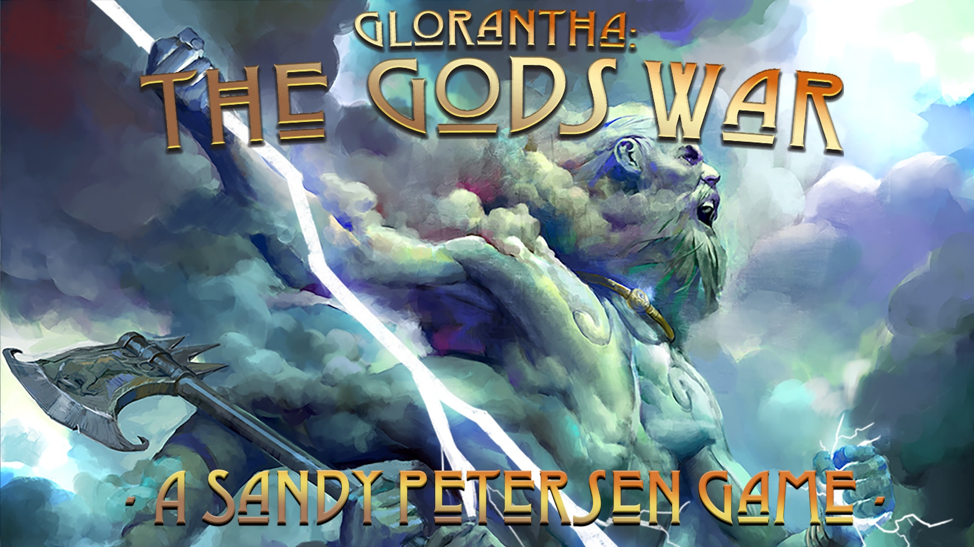
Over at the Petersen Games blog, Sandy talks about “how to be a game designer“, and in particular talks about the different types of designers. He illustrates this point with some anecdotes from his collaboration with Greg Stafford.
Greg originally invented Glorantha to write fantasy books about, but instead this universe was used for games, comic books, art, etc. Greg was a virtual fount of creation., spewing out interesting concepts almost every day.
Sandy Petersen is of course a big name in Chaosium’s history, being the author of the Call of Cthulhu RPG. But he’s also worked on many parts of Glorantha, and you’ll find his name on things ranging from Trollpak to the Guide to Glorantha to his giant “Glorantha: The Gods War” board game.
I worked closely with Greg, but I am not his kind of creative. Instead, I am a syncretive designer. I pick and take ideas from others, matching these together to make a coherent new whole. In our collaboration, first Greg would come up with some crazy idea. Then I would listen to him, remember some idea he had a year ago on a related topic, and figure out how these both worked together. I also carried things to a logical conclusion, which he often hadn’t considered.
As an example, Greg said the Red Moon in Glorantha has phases, just like earth’s moon. But the Red Moon doesn’t move – it always sits in the same place overhead. So, I pondered, “Why would this moon have phases?” In Glorantha, the sun orbits the world in Ptolemaic fashion. There is no outside cosmos. So, what makes the Red Moon change appearance? I conjectured, “perhaps the moon is dying and being reborn. That’s what causes the phases.” Later, I suggested, “perhaps an unknown dark object orbits the moon, casting a shadow on it”. Well, Greg used both those ideas at different times, apparently forgetting which he liked better. Perhaps that ideas could be combined? I wondered – maybe an unknown dark object orbits the moon whose shadow kills the moon as it passes over it, only to revive when it passes.
Greg invented wacky cults and religions all the time. Then I had to transform them into something playable for a game. I was always focused on what is FUN for players. Greg just liked creating new material – in his mind, simply knowing about his world’s depth and features was enjoyable all on its own, and I’m not saying he was wrong. In the end, the combining of his fount of energy and my focus on playability led to some terrific game ideas.
This shows that two extremely different designers could be creative in different ways, and yet forge a coherent and great game universe which lives on. Similarly, you can be creative in more than one way.
Drawings by Lee O’Connor
Here are some very nice Orlanthi deities by Lee O’Connor:
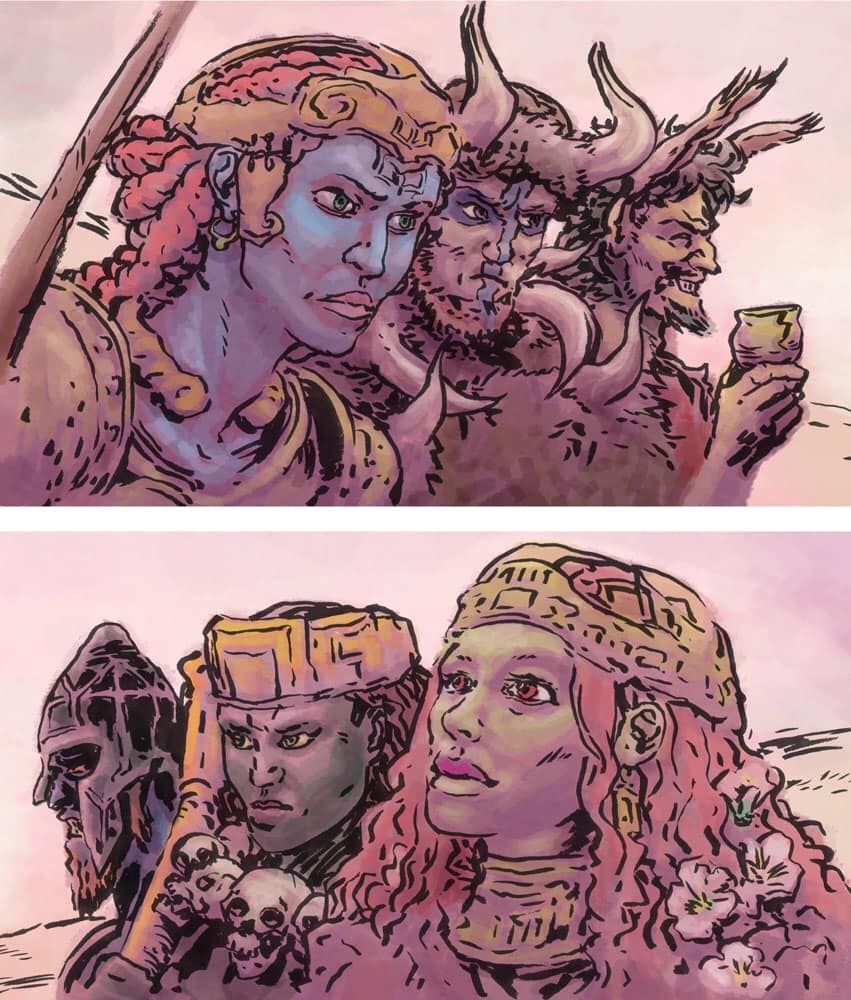
From left to right and top to bottom, these are Vinga, Storm Bull, Eurmal, Humakt, Maran Gor, and Ernalda.
Glorantha’s Lozenge and Skydome
This illustration by Bernard Bittler Arias appeared in the landmark French magazine Casus Belli back in 2000, when it came back with the first issue of its short-lived “volume 2″… (you have to know that Casus Belli has had a complicated publishing history that started in the early 1980s, but it is still published to this day).
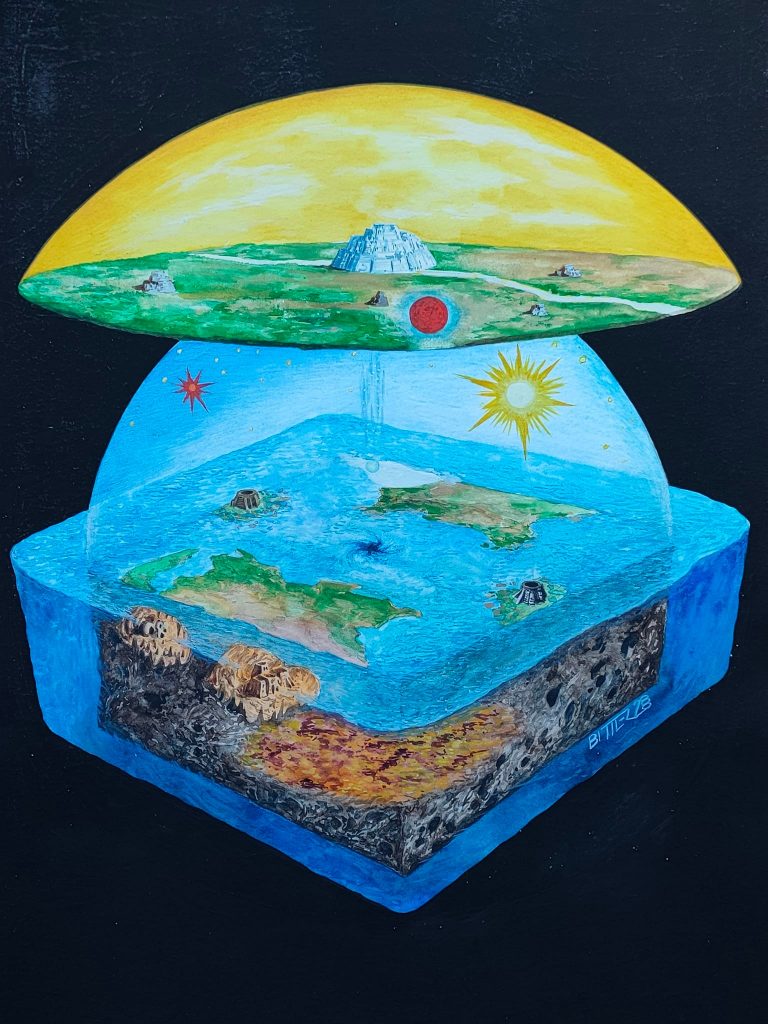
Anyway, Bernard is selling the original painting. Contact info here.
Clan Map of the Grazelands
French archivist extraordinaire 7Tigers has found this very nice map of the Grazelands on the Internet Archive:

Of note, it features the names of all the Grazelander clans, which is super useful because coming up with names is the hardest thing with world-building (at least for me). Give me a name, and I can write pages about it!
7Tigers credits the cartography to David Dunham, based on a map by Greg Stafford. I haven’t been able to double-check this but hey, 7Tigers knows.
Holy Country Ships
Some Holy Country triremes by Martin Helsdon, possibly from his upcoming Jonstown Compendium book on sailing around the Holy Country:
An Alatan hemiolia and three types of Holy Country trireme.
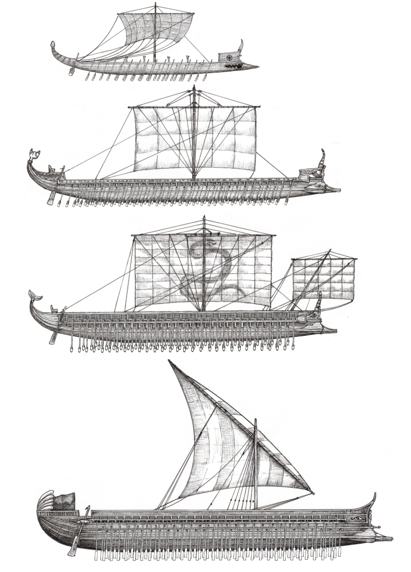
Thank you Martin for my new word of the day: “hemiolia“.
Right Hand of the Devil
Jim Mozley shared this nice painted miniature of the Right Hand Claw, from Infinity Engine. The other pictures include one of the Devil’s severed fingers bleeding a gorp out, and a gorp reaching for something (probably an adventurer).
Elsewhere on Arachne Solara’s Web
Not everything is about Glorantha, although most things are! Here are loosely relevant things that we found on the interwebs.
Dragon’s Eye Stone Mine
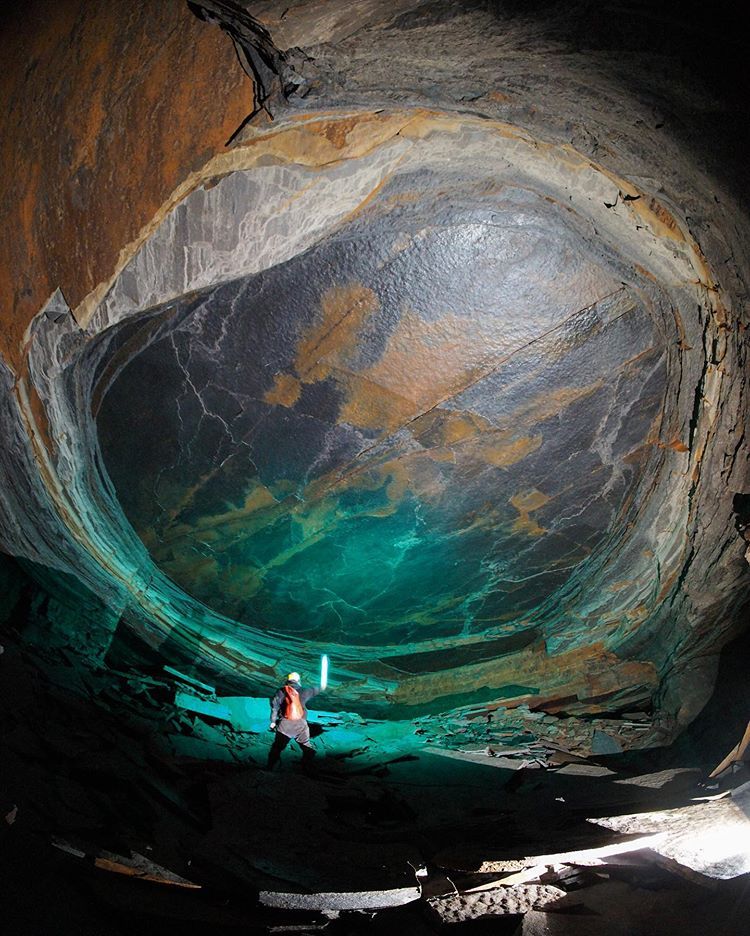
Simon Phipp reminded me of this cool thing that definitely has its place here: the Dragon’s Eye Stone Mine in Lancashire (UK).
Not to be the fun-ruiner, but sadly some more research indicates that the surface of the “eye” is actually flat, and forms a roof over the cave. It appears curved and inclined down because most photos of it are taken with a fish-eye lens.
Thank you for reading
That’s it for this week! Please contact us with any feedback, question, or news item we’ve missed!



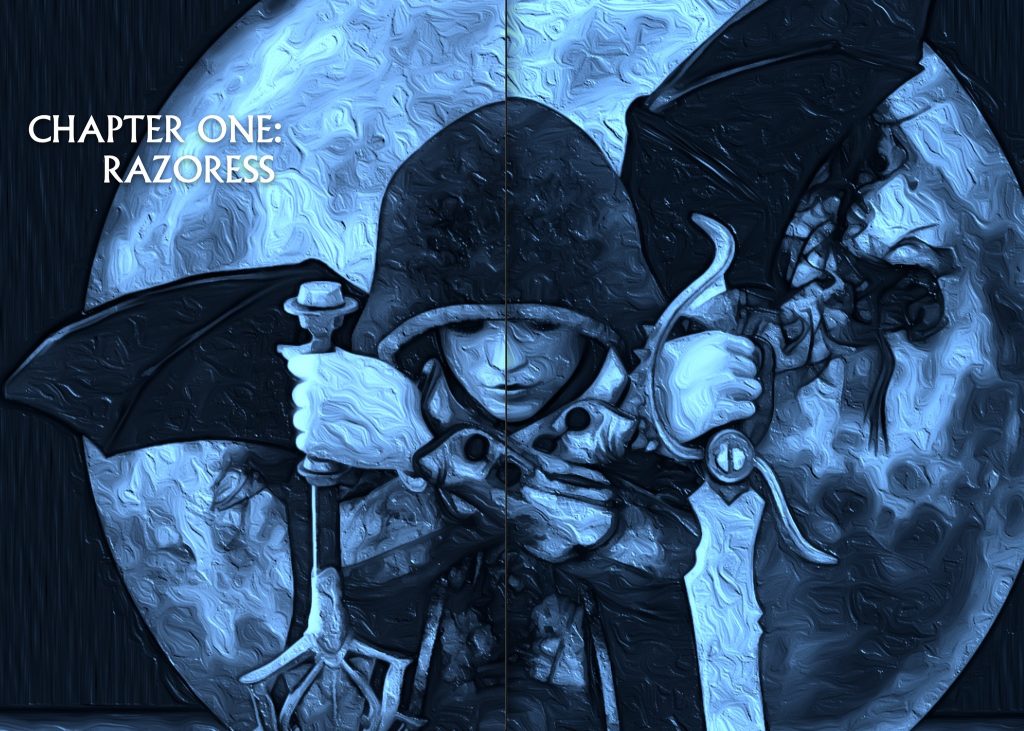

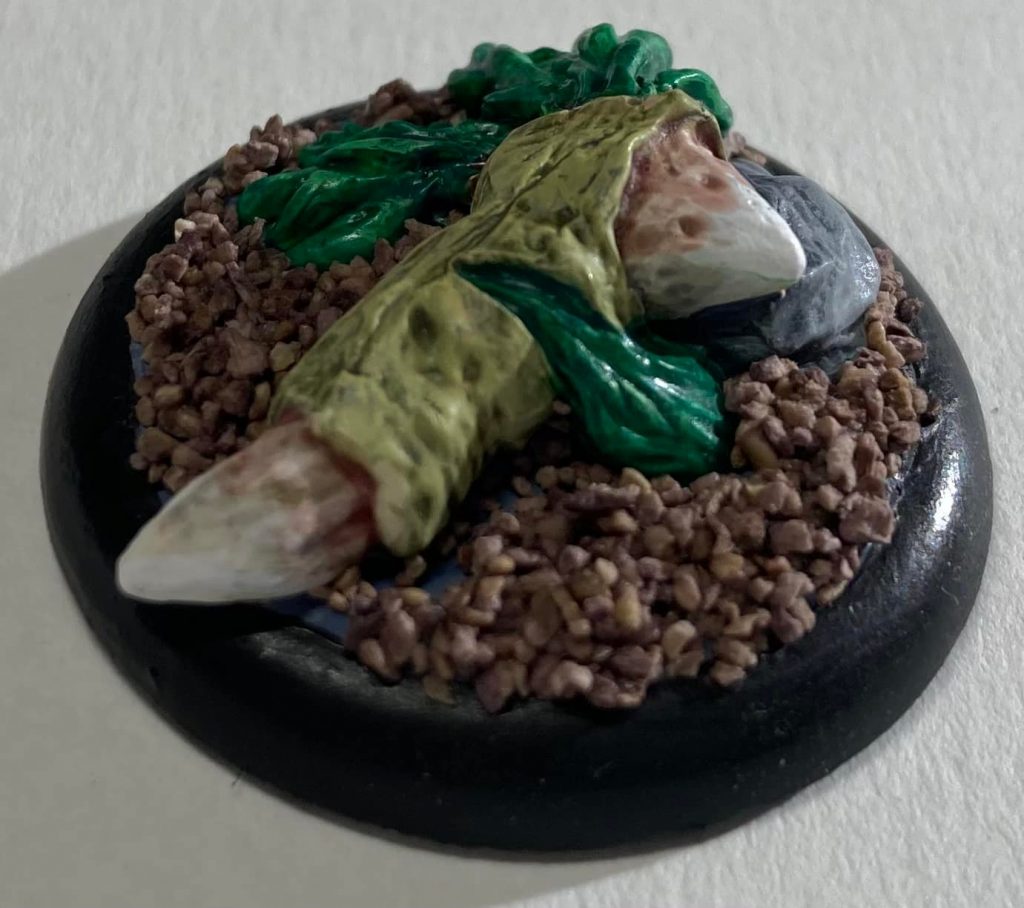
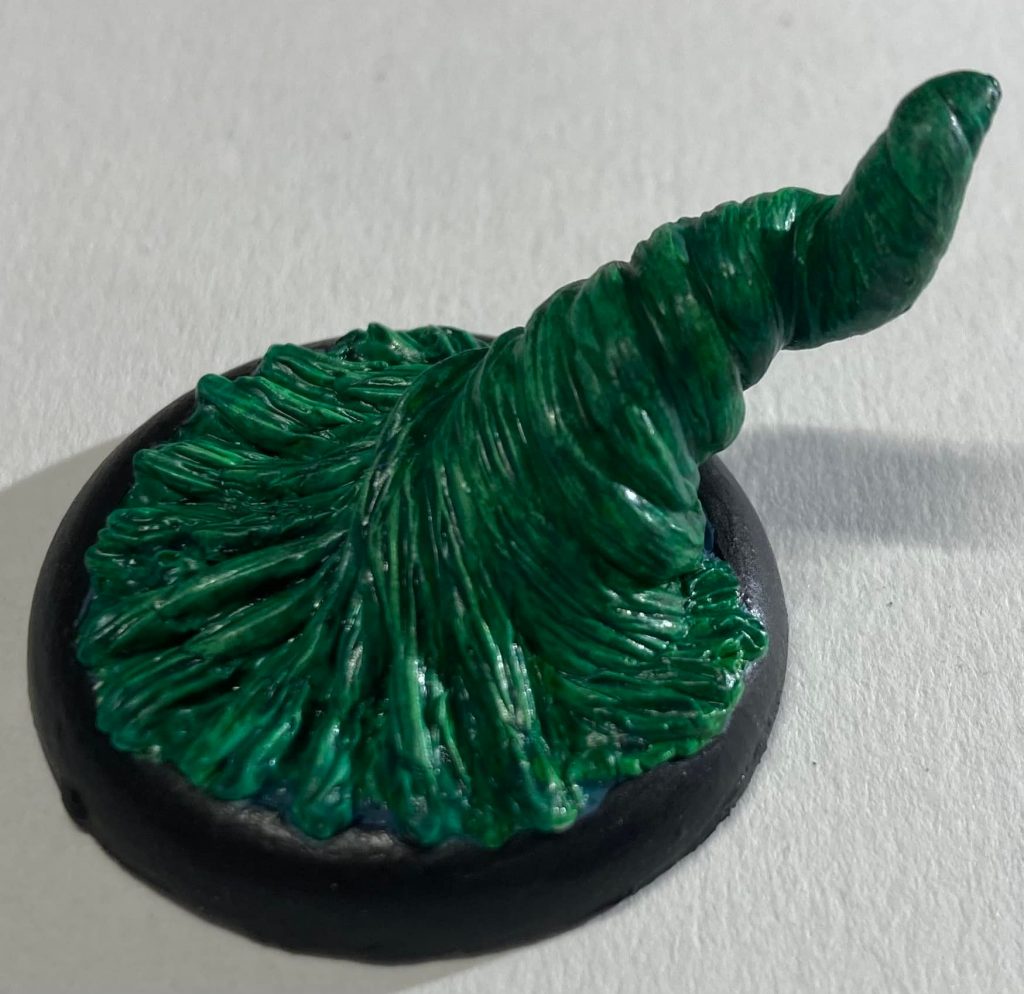
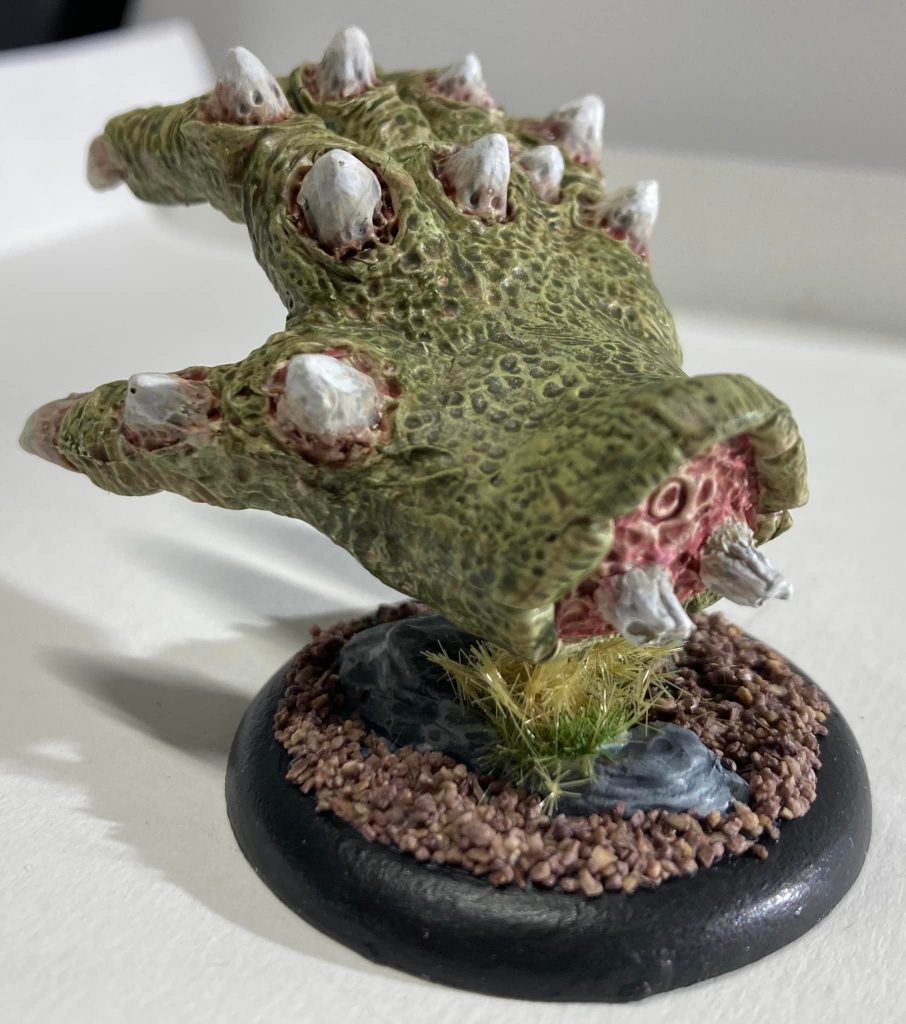
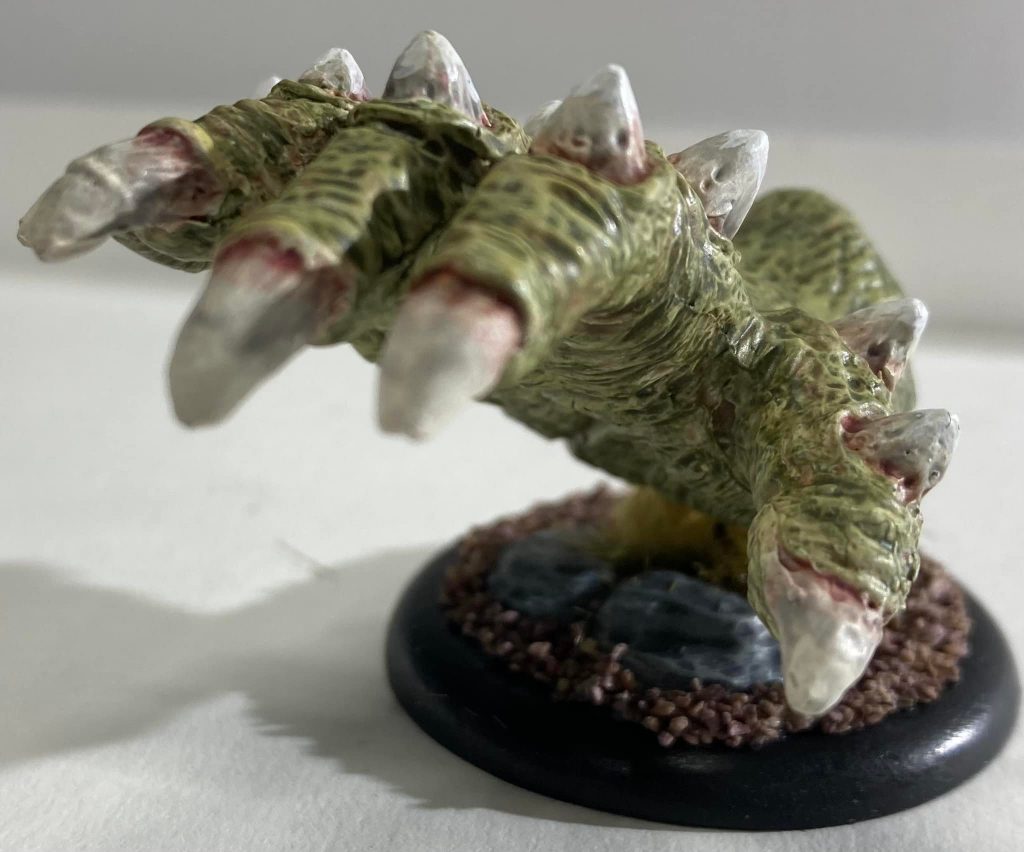
One comment on “Journal of Runic Studies #42”